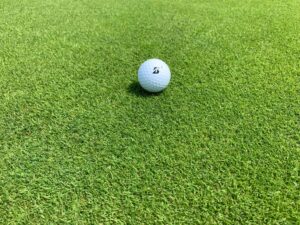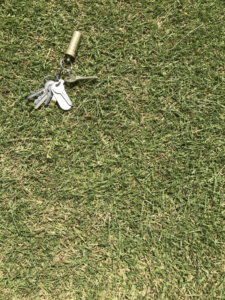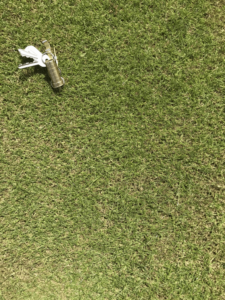Bent Grass Seed – The #1 choice for golf greens in the UK
Golf enthusiasts know the importance of a perfect green, and in the UK, Bent grass seed reigns supreme. Bent grass, with its fine-textured blades and dense growth, provides the ideal surface that golfers covet. It stands out as the time-tested choice for manicured courses across the United Kingdom.
Delving into the reasons for its popularity, we explore the agronomic traits that make bent grass the go-to for British greens. From its tolerance to close mowing to its preference for cool, temperate climates, Bent grass is tailor-made for the UK’s unique golfing conditions.
This article will address the superiority of Browntop Bent over its Creeping Bent counterpart in the UK’s setting. We’ll discover the secret behind its ability to thrive and how it contributes to the unmatched quality of British golf greens.
What is Bent grass?
Bent grass, particularly the Browntop Bent variety, is a highly esteemed grass seed species renowned for creating pristine golf greens. This fine-bladed species is chosen for its exceptional shoot density, which contributes to a dense surface capable of withstanding frequent surface disturbance – a common issus on well used golf courses.
These grasses thrive in both moist soils and free-draining sand soils, revealing their adaptable nature to varying conditions. When establishing a grass expanse with Browntop Bent, a specific sowing rate is recommended to ensure optimal density and coverage. The sowing rate of Browntop Bent is always very low. This is because the seed is incredibly fine, almost like dust. Sowing rates can be as low as 5 grams per square meter.
The attribute of being top-ranked is often attributed to Browntop Bentgrass varieties which exhibit high shoot density and superior visual merit. Bentgrass is celebrated for its drought tolerance, showing an exceptional tolerance to lower moisture conditions compared to the less desireable annual meadow grass. Furthermore, this adaptability extends to its capability to flourish in more mositure retentive soils. This is why bent grass is often prevalent on inland sites where soil moisture is generally higher, as oposed to links golf courses that use more fescue grass due to their drier conditions.
Mowing Height: Bentgrass can be cut to a very low height, necessitating a precise mowing schedule, particularly on golf greens to maintain its fine texture and playability. Heights down to 3mm are possbile for browntop bent. But higher heights at around 4mm can produce fast putting surfaces if mositure levels can be lowered.
Sowing Time: Bentgrass is best sown at certain times of the year to achieve the best establishment – typically during warmer summer and autumn periods.
Finally, grasses like the Browntop Bentgrass are often included in species exchange programmes that aim to replace less desirable species with a more suitable variety for golf course conditions. Overseeding golf greens with bent seed in common in the UK. The aim is to establish a bent dominant sward that will be more manageable than one dominated by Poa annua.
Why is bent grass used widely on golf greens in the UK?
Bentgrass, specifically Browntop Bentgrass, is a popular choice for golf greens in the UK due to its exceptional shoot density. This dense growth habit creates a smooth and dense surface that provides a very desireable playing surface. One of the key reasons for its popularity is its suitability to the UK’s climate. Browntop Bentgrass exhibits superior winter fusarium tolerance throughout colder months. Additionally, its drought tolerance is noteworthy, allowing it to withstand dry conditions which are beneficial for both golf green aesthetics and playability.
For upkeep, Browntop Bentgrass can tolerate low mowing heights, essential for the fast, true surfaces desired in golf courses. Its small seed size also contributes to easier and less disruptive overseeding operations. Furthermore, it adapts well to a range of soil types, from free-draining sand soils to more moisture retentive soils, making it versatile for different locations.
UK golf courses often participate in species exchange programmes where annual meadow grass may be partially replaced with bentgrass to improve the green’s quality. Overall, its physical traits and durability make bentgrass a prevailing choice within the UK golfing industry.
How short can you mow bent grass?
Browntop Bentgrass, is a mainstay on many golf courses due to its exceptional shoot density, creating a dense surface that can endure frequent surface disturbance like ball marks and foot traffic. This grass seed species is favored for its disease resistance and low input qualities, as well as its drought tolerance.
Mowing height is a vital factor in turf maintenance, especially for bentgrass, which is capable of being cut to a very low height – often down to 1/8 inch (3mm) for golf greens. Maintaining such a short height promotes a consistent and smooth grass expanse, essential for the golf green’s performance. However, cutting it too short, or scalping, can be detrimental to the health of the turf.
It is crucial to note that the tolerance of bentgrass to low mowing heights can vary based on environmental conditions. For instance, in cooler climates with retentive soils, softer ground conditions might mean that the actual height of cut is lower than the bench setting. In hotter, drier conditions, a slightly higher mowing height may be necessary to avoid stress on the grass. Monitoring the health of your Bentgrass and making adjustments to mowing practices as needed is crucial for maintaining a resilient golf course turf.
Key Points:
- Ideal Mowing Height: Can be as low as 1/8 inch (3mm) for golf greens, although 4mm is preferable.
- Affects of Low Height: Enhances dense surface but can stress grass if too short.
- Environmental Factors: Soil type and climate dictate optimal mowing height.
- Maintenance Practice: Regular monitoring and adjustment are essential.
What conditons does bent grass prefer?
Bentgrass, an integral component of golf greens, thrives in specific conditions. It typically favors free-draining sand soils, which allow for consistent soil moisture without excessive water retention that could harm the roots. This grass type can flourish in both drier conditions, owing to its drought tolerance, and adequately moist soils, though standing water can lead to fungus and disease problems. Optimum bent grass surfaces are ones that are free draining.
Bentgrass Details:
- Preferred Soils: Free-draining sand soils, tolerate moist soils
- Tolerance: Drought and heat tolerance
- Optimal Growth: Often occurs during hot summer conditons
- Golf Green Benefits: Dense surface withstands play, enhances playability
- Mowing: Maintains quality at low mowing heights
Sowing bentgrass involves careful consideration of seed size and timing. European-bred varieties from breeders like Barenbrug are included in species exchange programs to maintain the best traits like drought tolerance and green color. For prime establishment, it’s crucial to provide an optimal sowing time and adhere to suggested mowing heights for the perfect golf green experience.
Why is browntop bent better than creeping bent in the UK?

Browntop Bent

Creeping Bent
Browntop Bentgrass is favored over Creeping Bent for golf greens in the UK for several compelling reasons. In the cooler UK climate, where warmth and sunlight are less abundant, Creeping Bent struggles due to its tendency to enter dormancy early in autumn and slow to revive in spring. This dormancy prolongs recovery, making Creeping Bent less suited for the impeccable standards of golf courses that require year-round playability. It also gives greater opportunity for Poa annua to colonise.
Creeping Bent is widely used in warmer climates such as the south of Europe or areas of the USA. In the right conditionas it can produce exceptional putting surfaces, in fact it is what is used on the greens at the famous Augusta National Golf Club.
In contrast, Browntop Bentgrass, notably the European-bred varieties, are better acclimatized to the UK’s temperate conditions. Its exceptional shoot density contributes to a dense surface resilient to surface disturbance, ensuring a superior playing field. Notably, its endurance in moist soils and retentive soils makes it particularly amendable to the UK weather. Moreover, the species exhibits superior winter colour retention and drought tolerance, thereby maintaining their performance throughout diverse seasons.
|
Attribute |
Browntop Bentgrass |
Creeping Bent |
|---|---|---|
|
Suitability for UK |
Yes |
Limited |
|
Shoot Density |
Exceptional |
Exceptional |
|
Year round performance |
Very good |
Weak in winter |
|
Tolerance |
High tolerance of drought, heat and disease |
High tolerance of drought and heat, but prone to Dollar Sport |
|
Dormancy |
Delayed dormancy, suitable for longer playing seasons |
Long dormancy period over the winter months |
|
Mowing Height |
Can tolerate close mowing |
Can tolerate close mowing |
For greenkeepers aiming for an immaculate grass expanse on golf greens, Browntop Bentgrass is the prefered bent seed, delivering desirable features like drought tolerance and a fine-textured green surface conducive to the exchange in golf.
Highland Bent
One type of bentgrass that should not be confused with high quality browntop bent is Highland Bent. This is an old primitive form of bentgrass that is not suitable for use in golf greens or arguably in any fineturf application.

Highland Bent

Browntop Bent